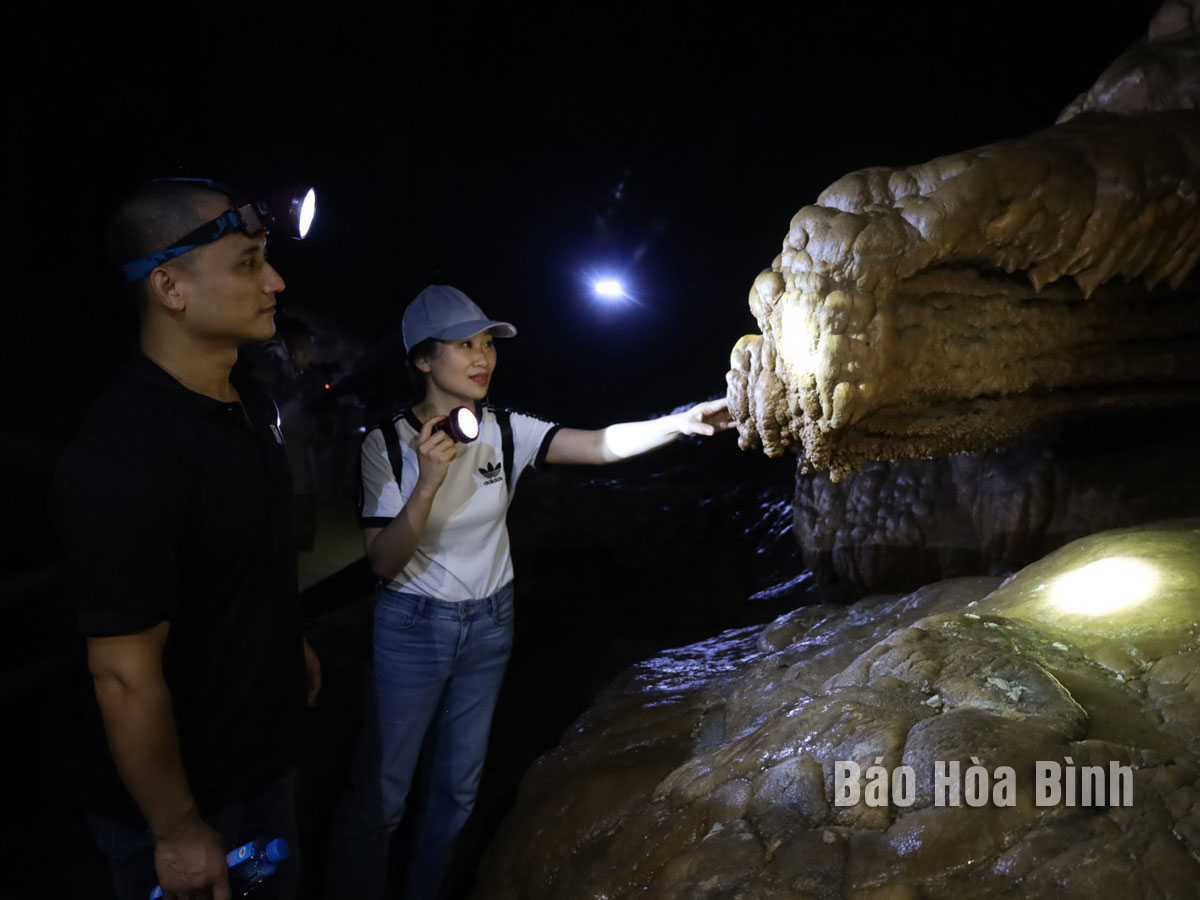(HBO) – Nam Son Cave, called Ton Cave by locals, in Van Son commune of Tan Lac district was recognised as a national landscape site in 2008. Earlier, many scientists had studied and recognised it as the most beautiful among the caves discovered in the Ngoc Son - Ngo Luong Nature Reserve, with stalagmites and stalactites dating back some 250 million years.
Tourists explore the national
landscape site of Nam Son Cave in Van Son commune, Tan Lac district.
After going by car for about 4km from the
commune’s centre, visitors will need to get off and walk uphill for 40 minutes
along small paths through the bamboo forest and rocky cliffs to reach the cave.
Bui Thi Thieng, a cadre responsible for cultural
affairs of Van Son commune, said the paths to Nam Son Cave remain pristine and
rough. Previously, a lighting system had been installed inside but then damaged
by the high humidity. Though many facilities haven’t been built, the cave’s
mysterious beauty is still attractive to visitors.
Located at an altitude of nearly 1,000m above
the sea level, Nam Son Cave is around 450m long and divided into three sections,
the middle one of which boasts a large lake about 2 - 7m deep with crystal
clear and cool water all year round. Its entrance is 90cm wide and 1m tall.
This cave is home to not only unique
stalagmites, stalactites, stone pillars, and stone curtains, but also many
historical and cultural antiquities. It also houses many bat and endemic
species.
Local residents said that they had learned about
the existence of this cave along time ago, but due to the darkness inside, no
one had intended to go deep inside to explore. Later, some farmers on their way
to the fields ventured into the cave to seek water, and they discovered the big
lake inside.
Setting foot here, any visitor will be amazed at
the majestic natural beauty with countless stalagmites rising up from the
ground and slender stalactites hanging down from the roof. The deeper people
go, the more stalagmites and stalactites appear. Some places of the cave are
like consecutive coral reefs while others similar to terraced fields.
Spending more than one hour exploring the cave,
Tran Trung Dung, a tourist from Hanoi, said that he used to visit many caves
across Vietnam as well as in some other countries in Asia, but he thinks Nam
Son Cave is the most unique thanks to its giant stalagmites in various shapes.
It is strange that at half of the mountain, there is a vast lake which is so
crystal-clear that all stalagmites and stalactites on this floor could be seen.
After being listed as a national landscape site,
Nam Son Cave has been protected properly, but the unfavourable transport has
hampered the capitalisation of its values and tourism potential.
Bui Minh Hong, head of the culture and
information division of Tan Lac district, said the cave will become an ideal
destination in the near future. The district has built a plan on
community-based tourism development, and Nam Son Cave will be one of the
magnets for travellers. In the time ahead, the cave will be equipped with
facilities to serve visitors, helping promote tourism diversity and
attractiveness in mountainous areas of Tan Lac.



